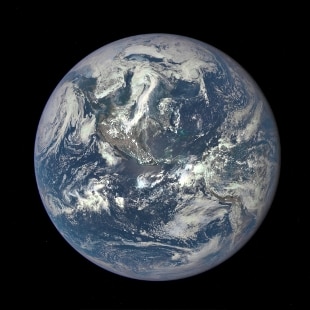Chaotic climate like the weather, 'impossible' forecasts
2020-05-13T13:33:36.456Z

The transition from one ice age to another, never regular and influenced by a myriad of factors, makes climate change chaotic as weather phenomena, and equally difficult to predict. Developing reliable models of the evolution of the climate is therefore an almost impossible task with current knowledge and it is necessary to develop new research tools. This is what emerges from the largest reconstruction of the history of the climate, which includes a period of 12,000 years. Published in the journal Nature Communications, the research was conducted by the Climate Physics Institute of the Niels Bohr Institute in Copenhagen in collaboration with the South China University of Guangzhou. Many years of models relating to climate change are thus put in crisis, as well as the possibility of distinguishing the contribution of man, like industrial activities, from natural variations. What makes it difficult to extrapolate and forecast is the network of complex relationships between the atmosphere, oceans, ice, the emerged lands and the biosphere, that is the set of living beings (animals and plants) that populate the Earth. Not to mention the role played by astronomical phenomena in the great climatic changes of the past, such as the intervals between the Ice Ages. A first step in trying to tidy up this incredible amount of interconnected variables is to go in search of basic structures: this is how the researchers, coordinated by Peter Ditlevsen, discovered common structures, which continuously repeat themselves in ever-increasing dimensions. small, just like the bizarre geometric figures called fractals. In nature these patterns are often repeated: just think, for example, of a familiar vegetable such as broccoli, in which the same 'flower' is repeated several times in ever larger structures up to the whole vegetable. Snowflakes, the network of blood vessels and that of rivers, crystals, waves of the oceans and DNA are also made in this way. Studying the climate as if it were a gigantic fractal is, for researchers, the first step to putting some order in the chaos: it starts from local phenomena and on a more restricted time scale, for example a century, up to increasingly large periods in search of regularity.
Share
17 March 2016The transition from one ice age to another, never regular and influenced by a myriad of factors, makes climate change chaotic like meteorological phenomena, and equally difficult to predict. Developing reliable models of the evolution of the climate is therefore an almost impossible task with current knowledge and it is necessary to develop new research tools. This is what emerges from the largest reconstruction of the history of the climate, which includes a period of 12,000 years. Published in the journal Nature Communications, the research was conducted by the Climate Physics Institute of the Niels Bohr Institute in Copenhagen in collaboration with the South China University of Guangzhou. Many years of models relating to climate change are thus put in crisis, as well as the possibility of distinguishing the contribution of man, like industrial activities, from natural variations. What makes it difficult to extrapolate and forecast is the network of complex relationships between the atmosphere, oceans, ice, the emerged lands and the biosphere, that is the set of living beings (animals and plants) that populate the Earth. Not to mention the role played by astronomical phenomena in the great climatic changes of the past, such as the intervals between the Ice Ages. A first step in trying to tidy up this incredible amount of interconnected variables is to go in search of basic structures: this is how the researchers, coordinated by Peter Ditlevsen, discovered common structures, which continuously repeat themselves in ever-increasing dimensions. small, just like the bizarre geometric figures called fractals. In nature these patterns are often repeated: just think, for example, of a familiar vegetable such as broccoli, in which the same 'flower' is repeated several times in ever larger structures up to the whole vegetable. Snowflakes, the network of blood vessels and that of rivers, crystals, waves of the oceans and DNA are also made in this way. Studying the climate as if it were a gigantic fractal is, for researchers, the first step to putting some order in the chaos: it starts from local phenomena and on a more restricted time scale, for example a century, up to increasingly large periods in search of regularity.

